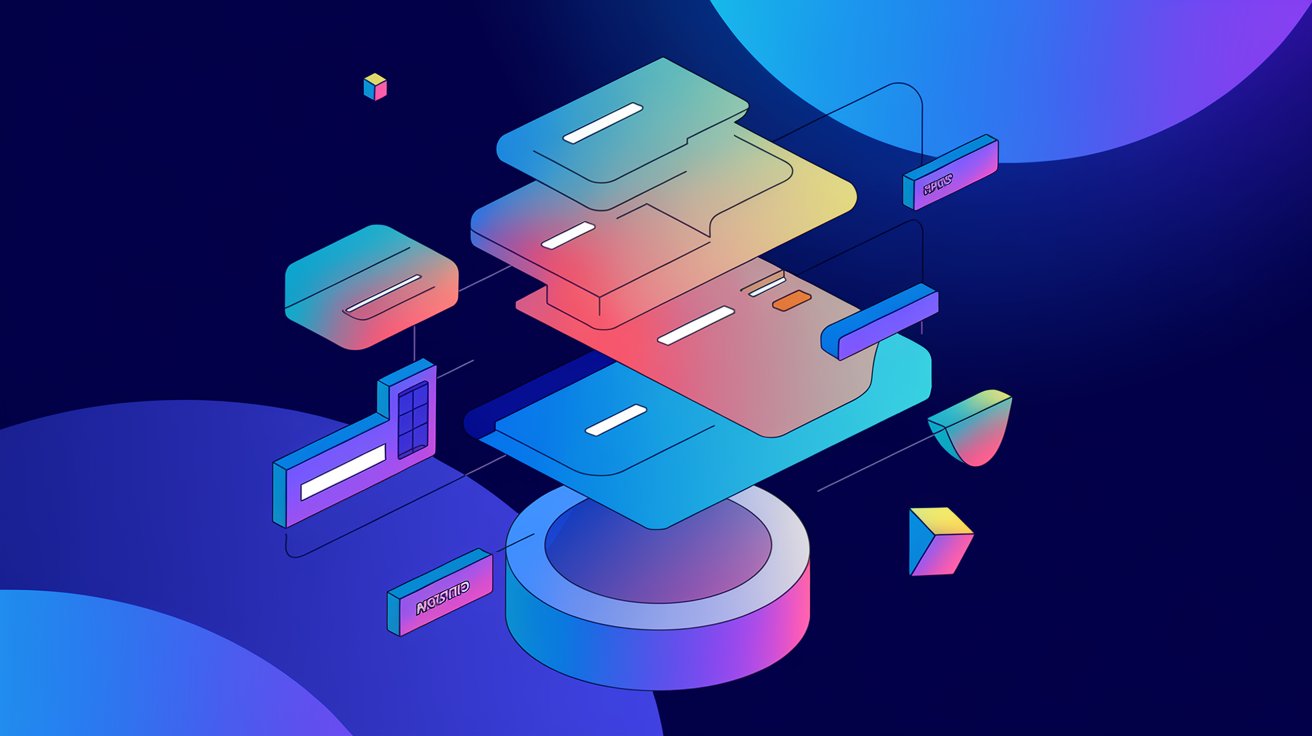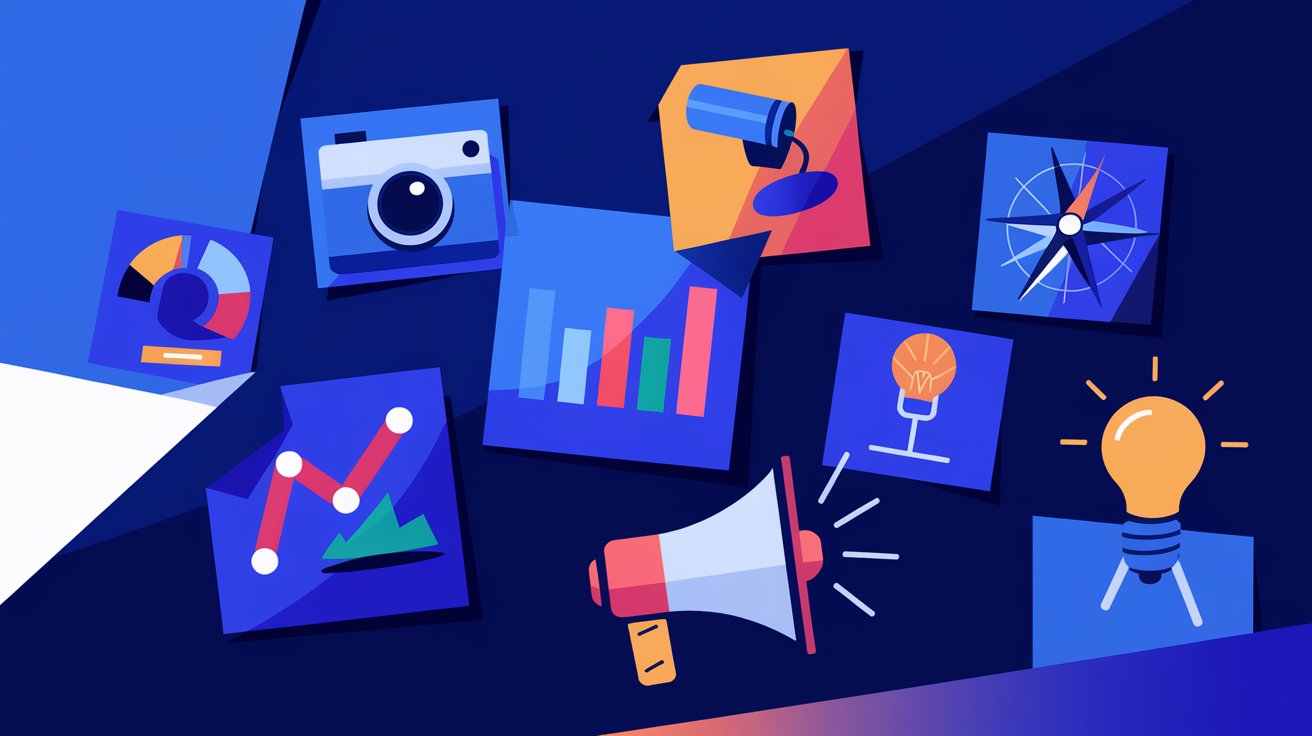SaaS marketing can be a complex puzzle, but once you unlock the pieces, the potential to scale your SaaS company becomes limitless. Understanding the unique aspects of SaaS marketing strategies and effectively implementing them will help your business acquire new customers, retain existing customers, and drive monthly recurring revenue (MRR). In this guide, we’ll dive into the key elements of SaaS marketing and how you can create a powerful marketing plan that ensures long-term growth.
Understanding SaaS Marketing
SaaS marketing is distinct from traditional marketing because it focuses on promoting and selling software as a service (SaaS) products. Unlike physical products, SaaS solutions are subscription-based services, meaning that the marketing effort doesn’t just end at making a sale. SaaS companies must continually engage customers to ensure they stick around and renew their subscriptions. This makes customer retention as important as customer acquisition.

In SaaS marketing, you are not just selling a product; you are selling the ongoing value that your SaaS business provides. Customers must be convinced that your software will solve their problems consistently over time. This requires a robust SaaS marketing strategy that not only attracts new customers but also focuses on reducing customer churn and improving customer lifetime value (CLTV).
Crafting a SaaS Marketing Strategy
Developing a successful SaaS marketing strategy involves several key components. From understanding your target audience to leveraging various digital marketing channels, every step is vital to ensuring your SaaS product stands out in a competitive market.
1. Understanding Your Target Audience
Every effective SaaS marketing strategy begins with a deep understanding of your target audience. Identifying your ideal customer personas is crucial because your entire marketing strategy hinges on how well you can communicate with them. Your marketing efforts should be tailored to solve the pain points of your target audience, making your SaaS product a necessary tool for their success.

Your customer base will likely vary in size and industry, so segmenting your audience based on their specific needs and behaviors is essential. This allows you to personalize your SaaS marketing efforts, whether through email marketing, social media, or content marketing.
2. Creating a Robust Content Marketing Strategy
Content marketing is at the heart of any successful SaaS marketing plan. By providing valuable content that educates, informs, and engages your audience, you position your SaaS company as an authority in your industry. This helps build trust and credibility with potential customers, making them more likely to choose your software over competitors.

Your content marketing strategy should include blog posts, whitepapers, case studies, webinars, and even user-generated content that speaks directly to your target market. By optimizing this content for search engines, you can improve your search engine optimization (SEO) and drive organic traffic to your website. SEO is a key part of any SaaS marketing strategy, as ranking high in search engine results can bring in a steady stream of qualified leads.
3. Leveraging Influencer and Social Media Marketing
In today’s digital world, social media platforms are a goldmine for reaching potential customers. A strong social media strategy allows you to engage with your audience where they spend most of their time online. SaaS marketers should leverage platforms like LinkedIn, Twitter, and even Instagram to connect with both B2B and B2C customers.

Influencer marketing is another powerful tool in the SaaS marketing arsenal. Collaborating with industry influencers who can vouch for your SaaS product adds authenticity and expands your reach to a broader audience. Influencer partnerships can also drive engagement and generate qualified leads, especially when combined with user-generated content and paid social media ads.
4. Optimizing Your SaaS Website and Landing Pages
Your website is the hub of all your SaaS marketing efforts. It’s where potential customers will go to learn about your product, sign up for a free trial, and eventually become paying customers. Therefore, optimizing your website for conversions is essential.

Your landing pages should be designed to capture leads efficiently. Clear calls-to-action (CTAs), engaging visuals, and persuasive copy will help guide prospective customers through the sales cycle. A/B testing different versions of your landing pages can help you determine what resonates most with your audience.
5. Running Effective PPC Ads and Paid Advertising Campaigns
While organic traffic is valuable, paid ads can accelerate your SaaS marketing efforts. Pay-per-click (PPC) advertising allows you to target specific keywords related to your SaaS product, ensuring your ads are seen by individuals actively searching for solutions like yours.

Google Ads and paid social media ads on platforms like LinkedIn, Facebook, and Instagram can generate immediate traffic and leads. PPC ads should be optimized regularly to ensure you’re maximizing your marketing budget and generating the best return on investment (ROI).
6. Nurturing Leads Through Email Marketing
Email marketing remains one of the most effective channels for nurturing leads and converting them into paying customers. For SaaS companies, email marketing is especially important because it allows you to stay top of mind with potential customers who may be in the consideration phase.
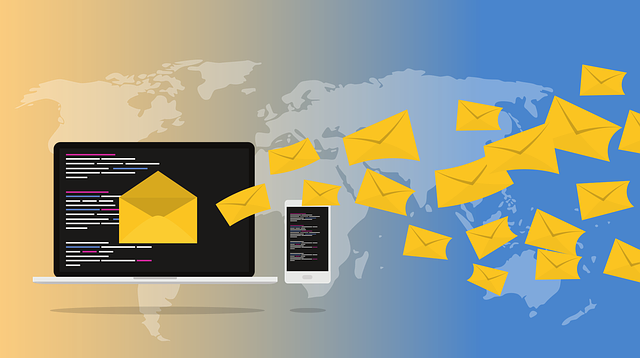
A well-structured email marketing campaign can guide leads through your sales funnel. You can use drip campaigns to educate potential customers about the benefits of your SaaS product, share customer success stories, and offer incentives like free trials or discounts to convert them into customers.
Regular email communication also helps with customer retention by keeping your existing customers engaged and informed about new features or updates.
7. Tracking Key Metrics and Analyzing Performance
To ensure the success of your SaaS marketing efforts, it’s essential to track key metrics and continuously analyze your performance. Some of the critical metrics to monitor include:
- Customer Acquisition Cost (CAC): The amount spent to acquire a new customer.
- Customer Lifetime Value (CLTV): The total revenue a customer generates over the duration of their relationship with your business.
- Churn Rate: The percentage of customers who cancel their subscriptions within a given period.
- Monthly Recurring Revenue (MRR): The predictable revenue your SaaS business generates each month.
- Lead Conversion Rate: The percentage of leads that convert into paying customers.
By tracking these metrics, you can adjust your SaaS marketing strategies to focus on areas that yield the best results. For example, if your CAC is high, you may need to refine your lead generation tactics or optimize your PPC ads. Similarly, if your churn rate is increasing, focusing on customer retention strategies will be critical.
SaaS Marketing for Customer Retention and Expansion
Customer retention is a significant part of SaaS marketing, as retaining customers is often more cost-effective than acquiring new ones. SaaS companies should focus on creating a positive customer experience through excellent onboarding, ongoing support, and regular communication.
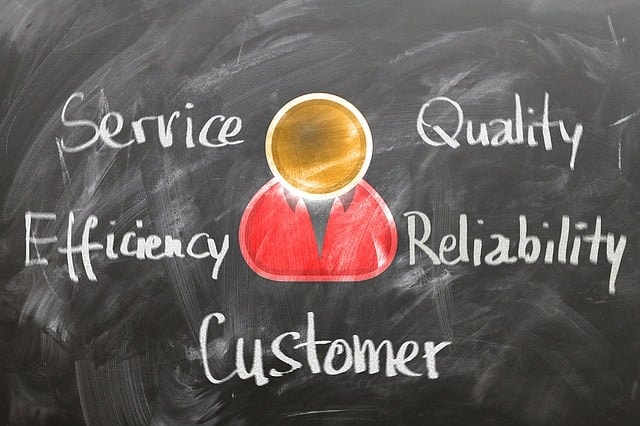
Happy customers are more likely to stick around, renew their subscriptions, and even upgrade to higher-tier plans, contributing to your business’s monthly recurring revenue.
1. Onboarding and Customer Success
The onboarding process is your first opportunity to make a lasting impression on new customers. A seamless onboarding experience sets the stage for long-term customer success.
SaaS companies should invest in customer success teams that can provide personalized guidance and support during the onboarding phase.
An effective onboarding process includes tutorials, walkthroughs, and helpful content that educates users on how to get the most out of your software. This reduces friction, helps users see value quickly, and increases the likelihood of them becoming long-term paying customers.
2. Ongoing Engagement and Retention Strategies
Once customers are onboarded, it’s essential to maintain regular communication and ensure they continue to find value in your SaaS product.
This is where email marketing and content marketing come into play again. Sharing helpful tips, product updates, and case studies keeps your customers engaged and prevents them from churning.
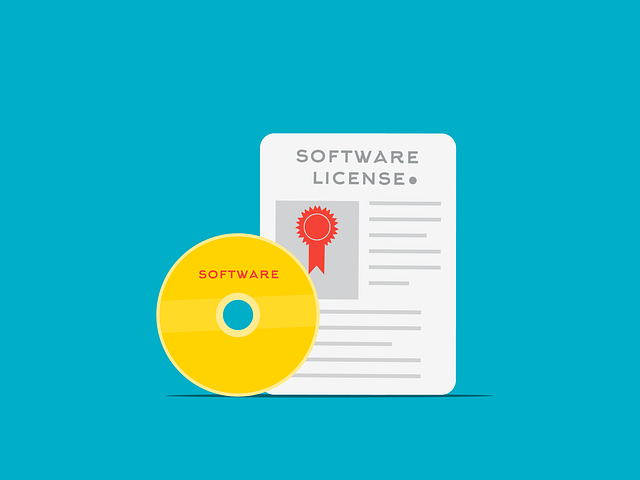
Regular check-ins with customer success teams can also help identify any issues before they escalate. Additionally, offering incentives such as loyalty programs or discounts for long-term commitments can further enhance customer retention.
Scaling SaaS Marketing Efforts
As your SaaS business grows, so should your marketing efforts. Scaling SaaS marketing involves expanding into new markets, optimizing your marketing budget, and continuously refining your strategies based on performance data.
1. Expanding into New Markets
Once you’ve established a strong presence in your initial target market, consider expanding into new regions or industries. This requires a well-thought-out marketing strategy that takes into account the unique needs and behaviors of new potential customers.
Localization of content, language, and marketing messages will be crucial to successfully entering new markets.
2. Optimizing Your Marketing Budget
As your business scales, so does your marketing budget. Allocating your budget wisely ensures that you’re getting the most value out of your marketing campaigns.
Regularly reviewing the performance of your PPC ads, content marketing, and other marketing channels helps you determine which areas are worth investing more in and which might need to be scaled back.

Marketing managers should focus on optimizing campaigns that generate the highest ROI, whether that’s through paid ads, influencer marketing, or content creation. Flexibility in your marketing plan allows you to adapt to industry trends and the ever-evolving SaaS market.
3. Refocusing on Customer Lifetime Value
As you scale, don’t lose sight of the importance of customer lifetime value. SaaS businesses should prioritize retaining high-value customers and upselling them to higher-tier plans or additional products. By increasing the CLTV of your customers, you improve your bottom line without needing to continuously acquire new customers.
Long-term relationships with your customers are the backbone of SaaS success, and scaling your SaaS marketing efforts should always keep that in focus.
Myth Busting: Clearing Up Common Misconceptions About SaaS Marketing
SaaS marketing can sometimes be shrouded in myths and misconceptions that lead marketing teams down unproductive paths.

To ensure you’re getting the most out of your SaaS marketing strategy, let’s bust some of the common myths that many SaaS companies encounter. This segment will provide clarity and factual corrections that will sharpen your approach to marketing SaaS products.
Myth 1: “SaaS Marketing Is Just Like Traditional Marketing”
The Reality: Many people believe that marketing SaaS products is the same as traditional marketing for physical goods or one-time purchases. However, this is a misconception. SaaS marketing requires a distinct approach because it’s promoting a subscription-based service rather than a single, one-time purchase.
Unlike traditional marketing, where the goal is often just to make a sale, SaaS marketing is focused on generating qualified leads, converting them into paying customers, and—just as importantly—retaining those customers over time.

SaaS companies must continually engage their customer base to prevent churn and improve customer lifetime value (CLTV). This means that SaaS marketing strategies often rely on inbound marketing, where content marketing, social media channels, and email marketing play a pivotal role in nurturing relationships long after the initial sale.
Additionally, customer onboarding becomes crucial for ensuring that new customers understand how to use the product, which is not a typical concern in traditional product marketing.
Myth 2: “You Only Need One Landing Page to Drive Conversions”
The Reality: While having a well-designed landing page is essential for any SaaS business, relying on a single landing page for all your marketing efforts is a flawed strategy. SaaS companies often have diverse target audiences with different needs, and a one-size-fits-all landing page won’t resonate with all your buyer personas.
The best SaaS marketing strategies involve creating multiple landing pages tailored to different audience segments, each optimized to address specific pain points and solutions relevant to those potential customers.

By developing multiple landing pages, you can improve your conversion rates and generate more qualified leads. This also helps when running pay per click ads, as you can direct traffic to the most relevant landing page, increasing the chances of conversion.
Marketing managers should regularly test and optimize landing pages to ensure that they meet the evolving needs of different audience segments.
Myth 3: “More Marketing Expenses Automatically Lead to Better Results”
The Reality: A common misconception is that increasing your marketing budget will automatically translate into better results. While having a robust budget is important, throwing money at marketing efforts without a clear strategy can lead to wasted marketing expenses.
The key to successful SaaS marketing isn’t just spending more; it’s about spending smarter. This includes focusing on the best SaaS marketing practices that are data-driven and optimized for ROI.

Many SaaS companies fall into the trap of overinvesting in channels like pay per click advertising without adequately measuring the return on investment.
Instead of simply increasing spending, marketing teams should focus on refining their strategies, targeting the right buyer personas, and constantly analyzing key metrics such as customer acquisition cost (CAC) and customer lifetime value (CLTV).
This ensures that every marketing dollar is spent on efforts that genuinely contribute to growth, such as effective customer onboarding and retention initiatives.
By debunking these myths, SaaS marketers can sharpen their strategies, reduce unnecessary marketing expenses, and build long-term relationships with their current customers while continuously generating qualified leads for future growth.
Case Studies on SaaS Marketing Plan
Case Study: How SaaS Content Marketing Helped Retain Customers and Boost Growth
Company: XYZ SaaS Solutions
Focus: SaaS Content Marketing and Customer Retention
Key Outcome: Increased Customer Retention by 30%
XYZ SaaS Solutions, a mid-sized software-as-a-service provider, faced a significant challenge: while they were acquiring new SaaS customers, retaining them proved difficult. Their marketing team realized they needed to shift focus from just customer acquisition to a strategy that would also retain customers.

The marketing manager implemented a comprehensive SaaS content marketing plan aimed at educating and engaging existing customers.
This included creating a library of blog posts, video tutorials, and webinars specifically designed to showcase how users could get the most out of the SaaS solution.
By aligning content with common customer pain points, the company ensured that their paying customers saw ongoing value from their software.
Additionally, XYZ SaaS Solutions developed a quarterly customer success newsletter, reinforcing the company culture of customer support and loyalty.
These efforts resulted in a 30% increase in customer retention rates within six months, along with a notable reduction in churn. The focus on SaaS content marketing helped transform new sign-ups into long-term paying customers, leading to more sustainable business growth.
Case Study: Reducing Customer Acquisition Cost (CAC) with a Multi-Channel SaaS Marketing Strategy
Company: GrowthTech SaaS
Focus: Reducing Customer Acquisition Cost (CAC)
Key Outcome: Reduced CAC by 25% while increasing new customers by 20%
GrowthTech SaaS faced a rising customer acquisition cost (CAC) due to increased competition in the digital marketing space. Their marketing team realized that relying heavily on traditional marketing tactics, such as PPC ads, was no longer sustainable within their current marketing budget. To address this, the marketing manager developed a more diversified SaaS marketing plan that incorporated several strategies, including influencer marketing, social media marketing, and SEO.

The new SaaS marketing strategy aimed to generate more qualified leads through organic channels, reducing dependence on paid ads. The marketing team focused on creating high-quality content that aligned with search engine optimization (SEO) best practices.
Additionally, they launched a targeted influencer marketing campaign, collaborating with industry leaders to amplify their brand on social media platforms. This strategy increased brand visibility and brought in a wave of potential customers.
GrowthTech SaaS also optimized their free trial offers, ensuring that once new customers signed up, they received personalized onboarding and support. These combined efforts not only reduced CAC by 25% but also resulted in a 20% increase in new customers and improved customer retention by 15%, ultimately driving long-term growth.
Case Study: How SaaS Marketing Enhanced Customer Onboarding and Turned Free Trials into Paying Customers with SaaS Marketing Strategies
Company: FinTech SaaS
Focus: Converting Free Trials into Paying Customers
Key Outcome: Increased Free Trial Conversion Rate by 40%
FinTech SaaS, a financial software provider, was attracting many potential customers through free trials, but struggling to convert them into paying customers. Their marketing team realized they needed to refine their SaaS marketing efforts to improve the onboarding experience and showcase the true value of their product.

To address this, the company redesigned their customer onboarding process, integrating personalized email marketing campaigns triggered throughout the trial period. These emails provided educational content tailored to each user’s specific needs and usage patterns, addressing common pain points and highlighting key product features.
The team also created a series of in-app tutorials and interactive guides to ensure that new users could quickly and easily understand the software’s functionality. This strategy showed trial users how the SaaS solution could directly solve their business problems, increasing their likelihood of becoming paying customers.
As a result of these enhanced SaaS marketing efforts, FinTech SaaS saw a 40% increase in the conversion rate from free trials to paying customers within just three months. This success demonstrates how SaaS marketing is about acquisition and nurturing potential customers through to the final conversion.
How is SaaS marketing? Exciting, not only for a paying customer!
Conclusion: The Future of SaaS Marketing
The SaaS landscape is constantly evolving, and so must your marketing strategies. Staying ahead of industry trends, experimenting with new marketing channels, and continuously optimizing your marketing efforts will ensure your SaaS business remains competitive and successful


